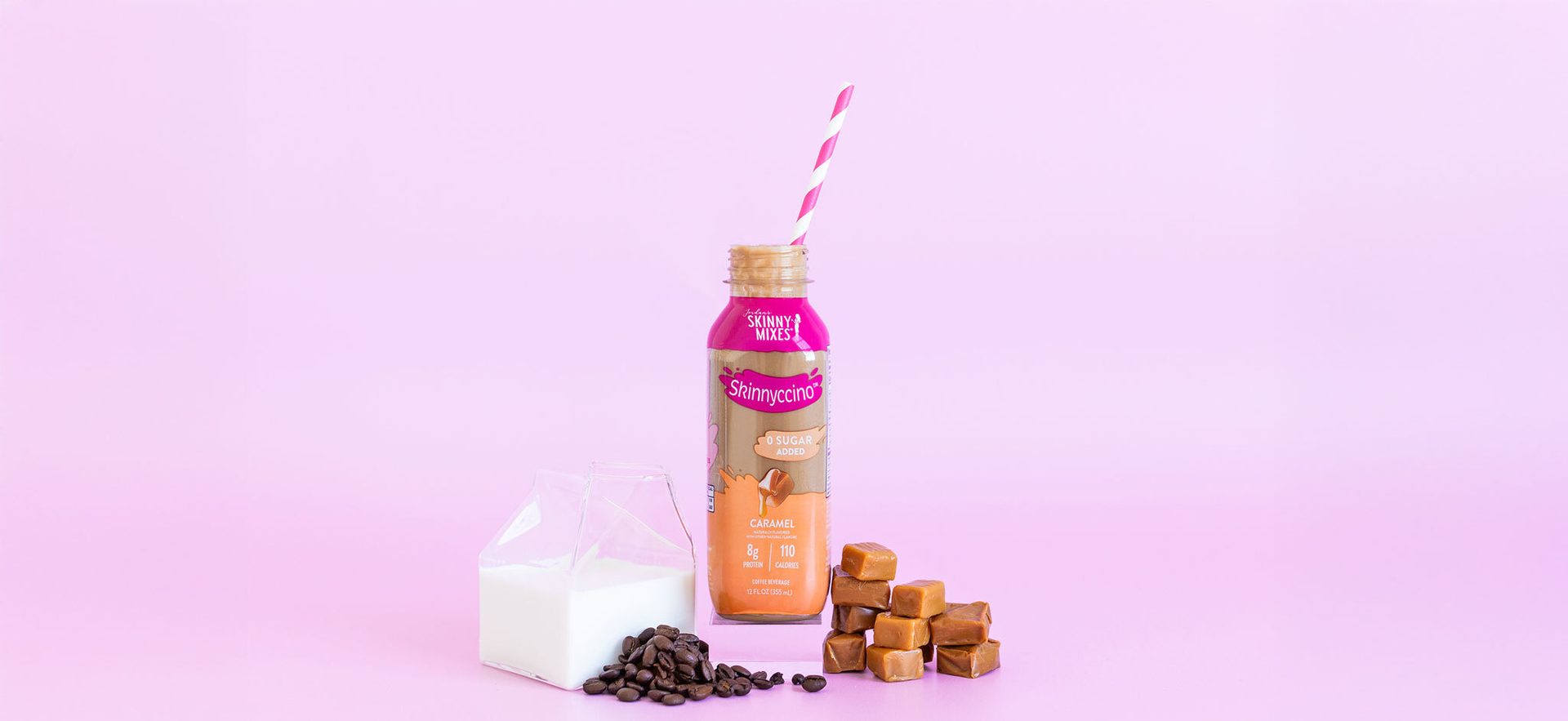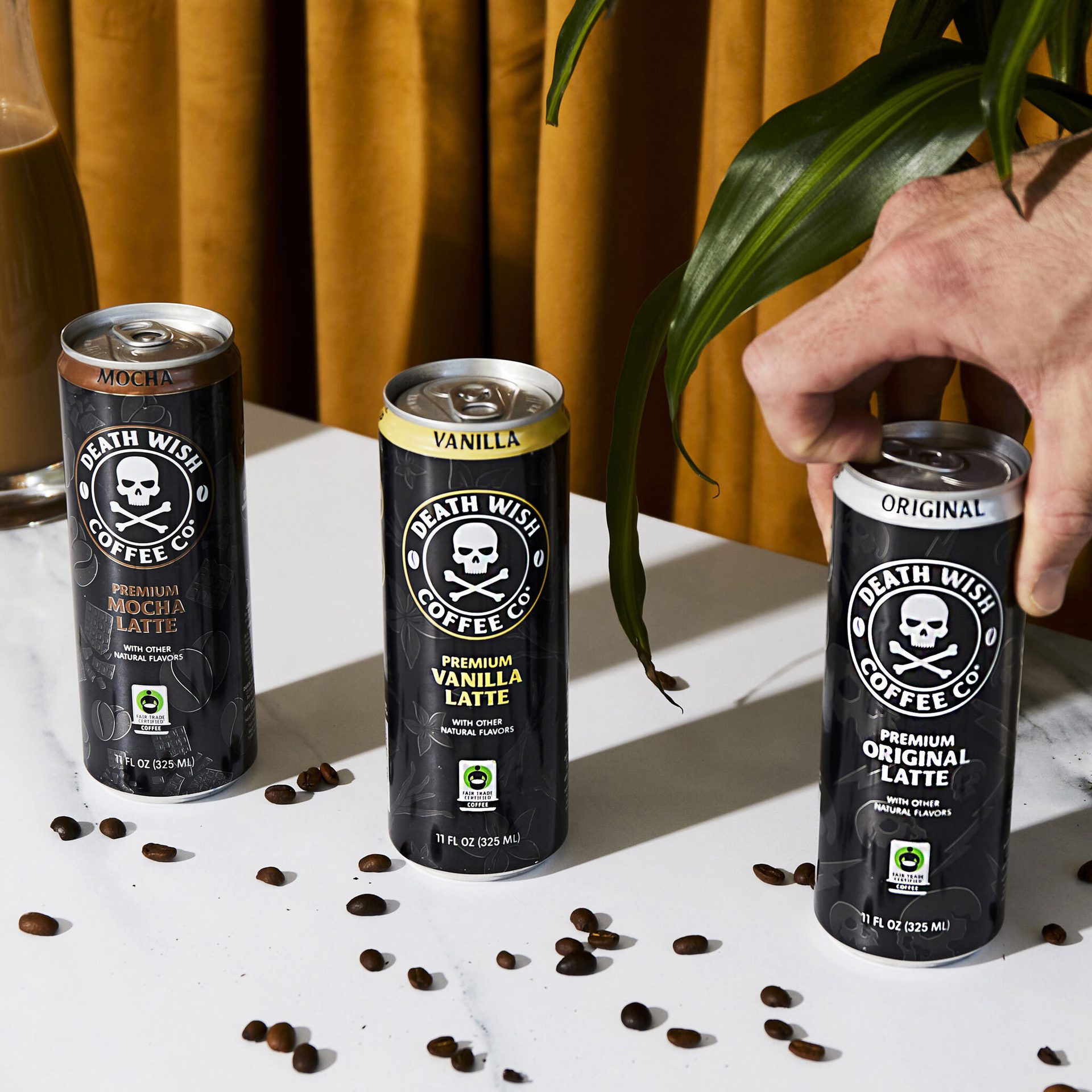
Coffee & RTD Coffee
Bottled water
2025 state of the industry
What’s in store for coffee
Premium, super-premium innovations spark consumer interest
By Lauren Sabetta
(Image courtesy of Jordan’s Skinny Mixes)
As the fourth wave of coffee has the market wearing many different hats, many consumers are looking to the coffee and RTD coffee category to meet various need states.
“Coffee has morphed into a beverage that can deliver both fun and function, capturing the 30% of consumers who are enthusiasts and providing energy to the 42% of coffee consumers who turn to the beverage as their go-to energy source,” noted Kelsey Olsen, food and drink analyst at Mintel, Chicago, in Beverage Industry’s September 2024 issue. “Meeting demands for both ― separately or simultaneously ― is an ongoing opportunity for brands to address a variety of needs.”
Mitch Madoff, head of retail partnerships at Keychain, New York, elaborated on how consumers’ interest in personalized coffees is shaping the category.
“The greatest consumer trends really lean toward that customization and the different forms in which coffee comes in … nitro is really a big differentiator right now. It creates the creamy sort of coffee drink with that foam and extra sweetness,” he explained in Beverage Industry’s September 2024 issue. “The other forms really allow customers really to find what really suits their own preference, so it’s sort of a pick your own adventure in the coffee industry right now — because of that customization specialization — the consumer is able to find what fits their daily habits and find products that they really enjoy to have on a daily basis. That’s really what coffee is all about — is that daily routine.”
Meanwhile, Mintel’s Olsen noted that younger consumers are changing the way that coffee is approached.
“[W]ith the growing variety of options and the corresponding variety in occasions, younger generations, particularly, may be rewriting the traditional coffee ‘as part of the morning routine’ story, and coffee may be turning more into a beverage that is part of rituals and different moments rather than the same routine each morning,” she said in Beverage Industry’s September 2024 issue. “For instance ― baby boomers (51%) were twice as likely as Gen Z (24%) to associate hot brewed coffee with being part of their morning routine.
“There is an emerging topic coming into play regarding caffeine and mental health driven by Gen Z: 25% of Gen Z coffee consumers are worried about caffeine’s impact on their mental health,” Olsen continued. “This is bringing rise to innovation centered [on] mental wellness and balanced caffeine experiences (like mushroom coffee), but also opening up paths to modernize decaf and half-caf coffee for modern needs.”

Death Wish Coffee Co. unveiled the latest addition to its coffee portfolio: Premium Lattes, crafted with simple ingredients including Fair Trade Certified, 100% Colombian Cold Brew Coffee and milk.
(Image courtesy of Death Wish Coffee Co.)
Sought after elements
As the coffee market evolves to meet with the interests of consumers, various attributes are having an impact on the category including caffeine levels, fortification and premiumization.
Building on customization trends, Keychain’s Madoff noted in Beverage Industry’s September 2024 issue, that the premium and super-premium innovations are helping lift the coffee category.
“I think the premium and super-premium is really what’s driving consumer interest and preference in the category right now,” he explained. “It really helps shape the customers’ preference and expectations in what they’re drinking every day.”
Madoff explained in Beverage Industry’s September 2024 that he expects the premium and super-premium trend to continue as the coffee consumer gets more sophisticated in the coffees that they’re drinking.
Roger Dilworth, senior analyst at Beverage Marketing Corporation (BMC), Wintersville, Ohio, also highlighted the impact premiumization is having on coffee.
“There continues to be evidence that some consumers are opting for coffee with perceived better qualities and thus premium and super-premium trends are having a somewhat positive effect,” Dilworth said in Beverage Industry’s September 2024 issue.
Mintel’s Olsen, meanwhile, explained that consumers have expressed affinity for premium coffee, however, she noted that the definition of what is premium is unique to the individual consumer.
“Almost one in three coffee consumers agree that premium coffee is an affordable luxury, yet 30% agree that store-brand coffee is just as good as name brands,” she said in Beverage Industry’s September 2024 issue. “Premium coffee is likely more personal and defined by different coffee consumers. Its definition is also likely evolving as we move through the fourth wave of coffee.
“For instance ― in this fourth wave, where consumers are crafting their own coffee drinks ― instant coffee has risen in popularity as an option that allows accessible and quick routes to customized coffee, and defies the notion that coffee enthusiasts need all of the fancy coffee preparation equipment,” Olsen continued.
Perhaps considereda sub-segment within the premiumization umbrella is the emergence of better-for-you (BFY) coffee drinks.
“Another example that’s sort of new, it’s been the last few years, but it’s also helping to fuel some of that growth is coffee that’s fortified whether it’s vitamins or it could be different mushrooms they’re adding into the coffee right now so that allows brands to differentiate them on shelf,” Keychain’s Madoff said in Beverage Industry’s September 2024 issue. “It has a competitive advantage by how they’re positioned on the shelf compared to different coffees that might be out there and it allows them to target very specific groups that might be more health conscious or potentially older adults that are in need of a special diet.”
Despite the opportunities to create more targeted coffee brands, Mintel’s Olsen noted in Beverage Industry’s 2024 issue, that fortification still is in early stages, but brands exploring different caffeine levels are opening more opportunities for the category.
“BFY coffee fortification remains a relatively niche space,” she said. “However, we are seeing innovation related to mindful caffeine consumption, likely driven by Gen Z’s concerns about caffeine and mental health.
“Some brands are innovating around caffeine levels specifically, whether that’s modernizing the decaf or half-caf space, or building a brand around a range of caffeine levels, like the Explorer Cold Brew brand that empowers consumers to choose their own adventure with four different caffeine level RTDs,” Olsen continued. “Some brands are fortifying with functional ingredients like adaptogens to double down on focus or bring a balance to the caffeine.”
Examining market trends
All the creative innovations flooding the coffee category come as it has navigated some performance challenges.
“The market has generally been fairly tepid,” BMC’s Dilworth said of the coffee market, in Beverage Industry’s September 2024 issue. “The inflationary environment in 2022 and 2023 led to solid declines in volume and robust retail dollar growth. In 2024, moderating inflation has led to a volume improvement and a deceleration in retail dollar sales growth.”
Mintel’s Olsen explained that despite some volatile years, dollar sales are expected to settle. Yet, volatility in other areas still is a concern.
“Future volatility is expected to emerge via supply chain issues tied largely to climate change, with the exact timeline still in question regarding when consumers will more directly feel the impacts,” she said in Beverage Industry’s September 2024 issue. “Categories like chocolate, which are facing climate concerns have already seen skyrocketing prices, and leading chocolate brands are taking action and prioritizing sustainability.
“The coffee market may follow suit and see larger players prioritizing these initiatives, and not necessarily driven by consumer demand ― as only 19% of coffee consumers report that they are worried about climate change’s impact on coffee production,” Olsen continued. [JJ1]
According to data from Chicago-based Circana, the overall coffee category saw a sales increase of 3.3%, totaling $16.7billion in total U.S. multi-outlets with convenience stores for the 52 weeks ending April 20. Unit sales also were up 1.9% during that same time period.
Meanwhile, the majority of that performance came from the single-cup coffee segment, which saw a sales increase of 0.8%, totaling $7.7billion, with unit sales up 2.3% for the 52 weeks ending April 20.
Among the various coffee segments, Mintel’s Olsen noted in Beverage Industry’s September 2024 issue, that many have seen growth slow, except for instant coffee.
“Instant coffee may be benefiting from improved perceptions attributed to social media exposure (possibly even spurred by Dalgona coffee’s moment in the early pandemic days), followed by innovation and modernization of the category from a range of brands like Maxwell House’s Iced Latte Foam Instant Coffee line to Blue Bottle’s Craft Instant Espresso,” she said. “The underlying amplified convenience and accessibility (no coffee-making equipment required) is certainly pairing well with the modernization and exposure, too.”
Meanwhile, Keychain’s Madoff explained that its data is showing that coffee concentrates are posting strong growth numbers as well.
“From the data that we’re actually collecting on Keychain we can see that the market is continuing to grow steadily year after year and it’s really being driven by the coffee concentrate category, which is showing growth of over 60% year over year,” he said in Beverage Industry’s September 2024 issue. “Some of the trends that we’re seeing have been in place for years, really continuing to drive the market.
“It’s really around that customization of drinks or specialty as well as the different form factors in which you can deliver coffee these days,” Madoff continued. “Whether it’s a nitro brew, a cold brew, ready-to-drink obviously for convenience purposes is really taking off, and even fortified coffees so the coffee category in general is still very healthy.”
BMC’s Dilworth noted that the contributions to the coffee category’s performance can be found across a variety of segments.
“From a retail dollar perspective, the biggest contributors to growth have been roast/ground, pods and RTD coffee,” he said in Beverage Industry’s September 2024 issue. “Roast/ground marketers have been able to take price, with some premiumization. RTD coffee has been driven by cold brew, particularly Danone’s STōK brand. And even though pods have slowed from their rapid growth years of yore, they still have contributed meaningful incremental dollars in the past five years.”
For the next five years, Dilworth noted that volume will start to trend upward, but dollar sales are expected to decelerate.
“Volume for the overall coffee market is expected to increase at a 0.7% compound annual growth rate (CAGR) between 2024 and 2029, an improvement on the 2019-to-2024 period, when volume declined,” he said. “On the other hand, retail dollar growth is projected to decelerate to a 1.6% CAGR in the next five years. Cold brew will continue to have strong growth but it won’t be enough for RTD coffee as a whole, which is expected to grow at only a 1% CAGR between 2024 and 2029, with volume being flat.”
As the category navigates these hurdles, brands will continue to embrace the trends that have dominated new product development as well as engage with coming-of-age consumers, experts noted.
“I think what you’re going to see is a doubling down on these current trends,” Keychain’s Madoff said in Beverage Industry’s September 2024 issue. “Using the data that we collect on Keychain, that’s what we’re seeing. We’re seeing the retailers and brands really doubling down in this category and continuing to push different categories of coffee that are expanding so it’s the ready-to-drink category, cold brew, again this fortification of coffees that we discussed as well as the specialty drinks.”
“You’re going to see that category of drinks continue to grow into the future, so I think it’s just a doubling down of what we’ve already seen in the category and that’s what we’re seeing in the data that we’re collecting,” he continued.